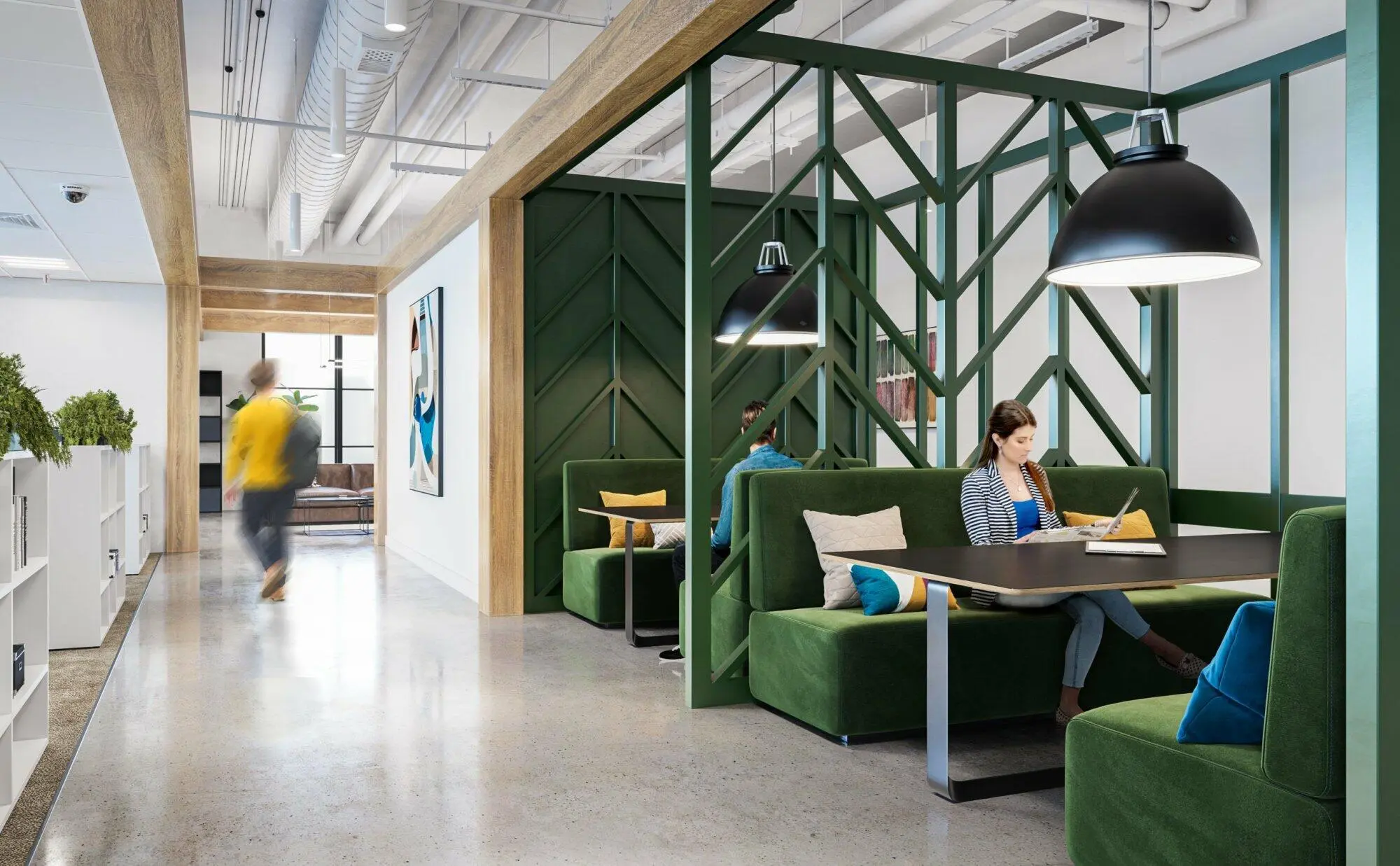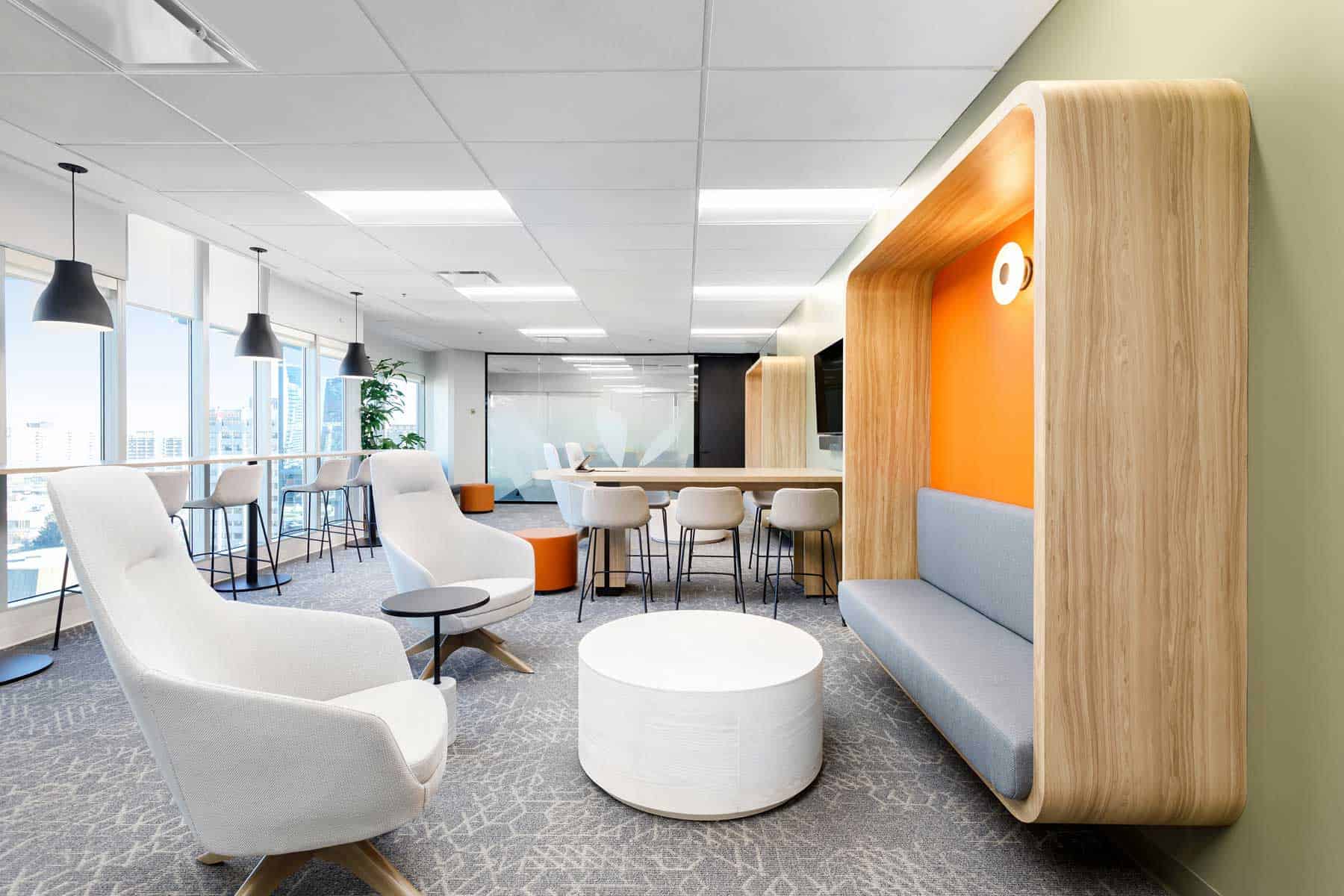The essence of the hybrid work model lies in its flexibility regarding the location of work and in a fundamental reimagining of our work methodologies. This paradigm shift necessitates creating adaptable, technology-centric workspaces, and deeply attuned to employee needs, thereby improving productivity, engagement, and overall wellbeing. At Streamline, we understand the critical importance of these aspects and are dedicated to integrating them seamlessly into each of our projects.
Understanding the Hybrid Work Model
The hybrid work model, a strategic blend of remote and in-office work, has reshaped the landscape of professional environments. This model emerged as a response to the evolving needs and expectations of the modern workforce, particularly in the wake of the COVID-19 pandemic. It has significantly impacted how workspaces are used, shifting from traditional, static offices to dynamic, flexible environments. This change reflects a deep understanding of employee expectations for greater flexibility and work-life balance. A recent study by CISCO found that 81% of Canadian employees say flexible work policies impact whether they stay at or leave a job. This shift underscores the importance of adapting office designs to align with hybrid workspace trends, ensuring that these spaces are functionally versatile and resonate with the evolving needs of today’s workforce.
Key Elements of a Flexible Workspace
When it comes to crafting the ideal flexible workspace, several key elements are crucial for success, especially in the context of today’s hybrid work model. These elements, combined with our holistic Design Build methodology, allow Streamline to create high-performance, design-led workspaces that are aesthetically pleasing and aligned with the evolving needs of the modern workforce.
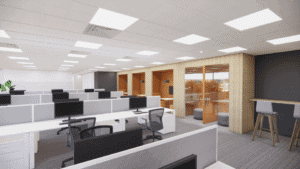
Open And Adaptable Spaces
The cornerstone of flexible workspace design, open and adaptable areas can be reconfigured to suit various needs, from collaborative team projects to individual focus work, ensuring a dynamic and versatile environment.
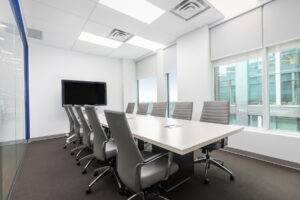
Technology Integration
For seamless remote and on-site collaboration, workplace technology must be integrated throughout any office space to keep up with hybrid workplace needs in 2024. Effortless connectivity and communication bridge the gap between in-office and remote team members for seamless remote and on-site collaboration.
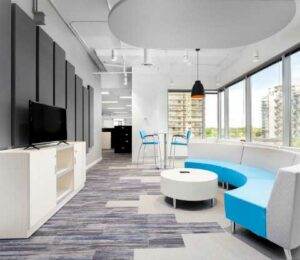
Designing For Health And Safety In A Post-Covid Era
In the post-COVID era, designing for health and safety has taken on new importance. Incorporating enhanced ventilation systems, touchless technology, and spatial designs that facilitate social distancing ensures that health and safety are paramount.
Enhancing Collaboration in Hybrid Environments
Enhancing collaboration in hybrid environments is a critical focus in today’s workspace design. In designing hybrid collaboration spaces, Streamline integrates various tools and design elements that foster communication and teamwork. This includes the strategic use of collaborative technology, such as interactive whiteboards and video conferencing systems, seamlessly integrated into meeting and communal areas to ensure in-person and remote participants can engage effectively.
We worked with PPI to value-engineer a hybrid workspace, utilizing space with multi-functional areas that would embrace connection and community while providing support for independent advisors. This included different zones for meetings and collaboration, a training room, and individual workstations.
Read more about our work with PPI.
Balancing Privacy and Openness
Balancing privacy and openness is a nuanced aspect of workspace design, especially in adapting to the hybrid work model. Implementing strategies that create private spaces within open-plan designs is critical in enhancing privacy in open workspaces. The strategic positioning of soundproofing materials to reduce noise pollution helps to create a serene environment conducive to focused work. Additionally, modular offices and phone booths offer the flexibility to create private, enclosed areas that can be easily reconfigured as needs change. Utilizingsmart film is also a great way to allow natural light into spaces while remaining private. By simply pressing a button, clear glass frosts over to create a private space. These design choices are meticulously integrated, ensuring that while the office maintains its open, collaborative ethos, individual privacy needs are also met, creating a harmonious balance that caters to the diverse requirements of today’s dynamic workforce.
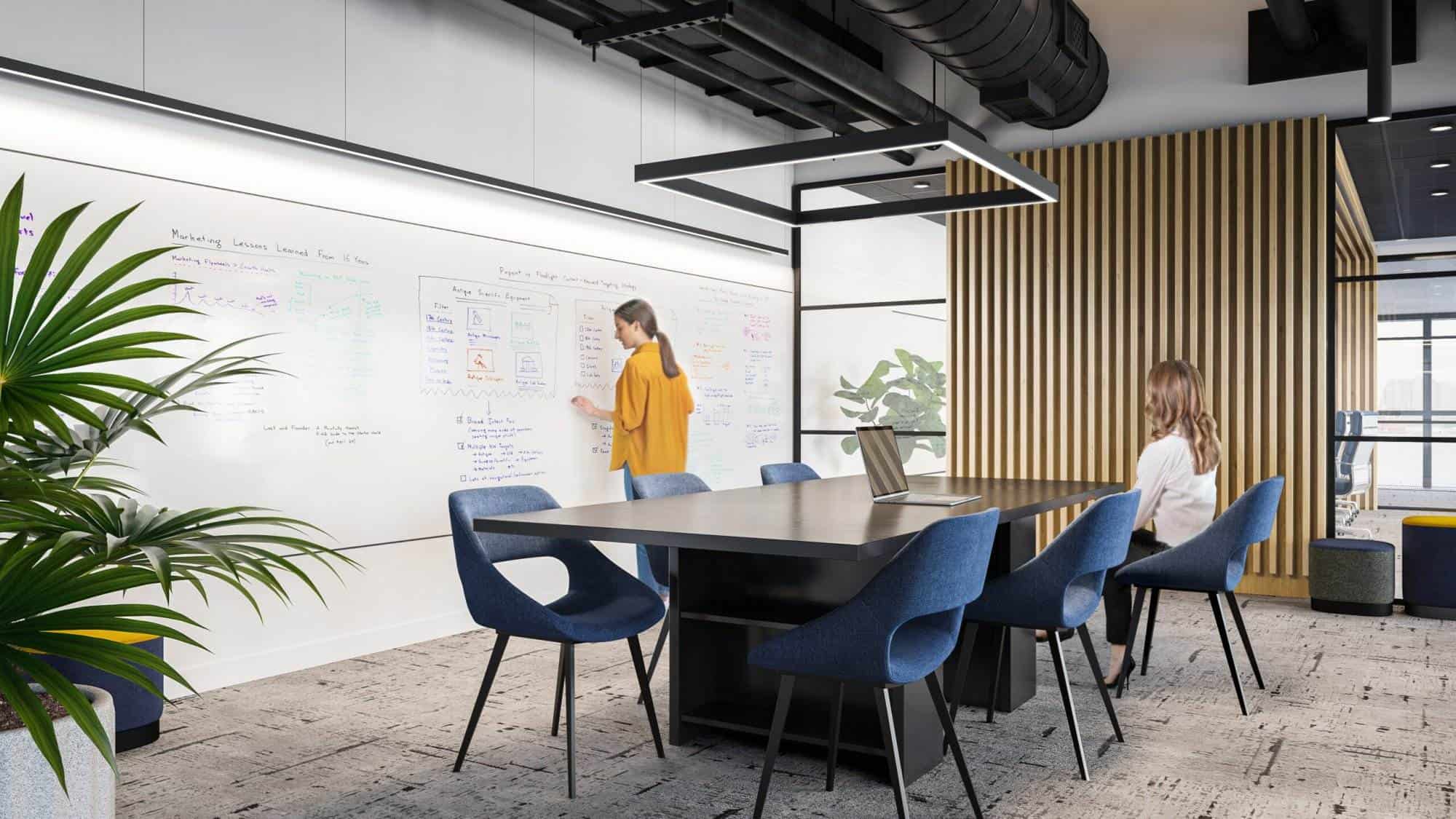
Eco-Friendly and Sustainable Workplace Design Choices
With more new builds than ever in the Greater Toronto Area, sustainability is far more than just a passing trend; it’s a fundamental principle at the heart of everything we do at Streamline. At Streamline, we integrate sustainable practices at every stage of our design and build process. We make it a priority to use eco-friendly materials, ensuring that everything from our furniture selections to our finishes plays a part in reducing the environmental footprint of our projects.
Customization and Employee Wellbeing
Our commitment to employee-centric workspace design goes beyond aesthetics, it’s about shaping environments that resonate with the wellbeing and satisfaction of each individual. Recognizing the impact of personalization on employee productivity, we tailor each workspace to reflect its users’ unique needs and preferences.
Elements like natural lighting, biophilic designs, ergonomic furniture, and wellness-focused design elements are pivotal not just in fostering a healthier and more productive environment for employees.
Technology Integration for Hybrid Workspaces
Recognizing technology’s crucial role in the modern office, we incorporate innovative solutions like smart lighting systems and desk booking systems. These innovations are not just about convenience; they’re about creating an environment that dynamically adjusts to enhance productivity and comfort. We understand that seamless connectivity and reliable technology are non-negotiable for businesses embracing the hybrid model. Therefore, our designs include advanced networking solutions and high-speed internet capabilities to ensure uninterrupted communication and collaboration, whether employees are working on-site or remotely. This holistic approach to technology in workplace design ensures that our office designs are aesthetically pleasing and functionally robust, catering to the ever-evolving needs of the modern workforce.
Adapting hybrid work model design strategies is more than a trend—it’s a strategic necessity in today’s evolving work landscape. The hybrid work model isn’t just about where we work; it’s about reimagining how we work. It calls for workspaces that are adaptable, technology-driven, and employee-focused, ensuring productivity, engagement, and wellbeing. Streamline recognizes the significance of these elements and seamlessly integrates them into every project.
If you’re looking to transform your workspace to suit the dynamic needs of a hybrid work model, Streamline is here to guide you through every step. Our expertise in creating high-performance, design-led workspaces is tailored to bring your vision to life, ensuring your office is not just a workplace but a space that embodies the ethos of your brand and the wellbeing of your employees.
Contact us at Streamline for expert guidance in designing a workspace that’s fit for today and future-proofed for tomorrow.

